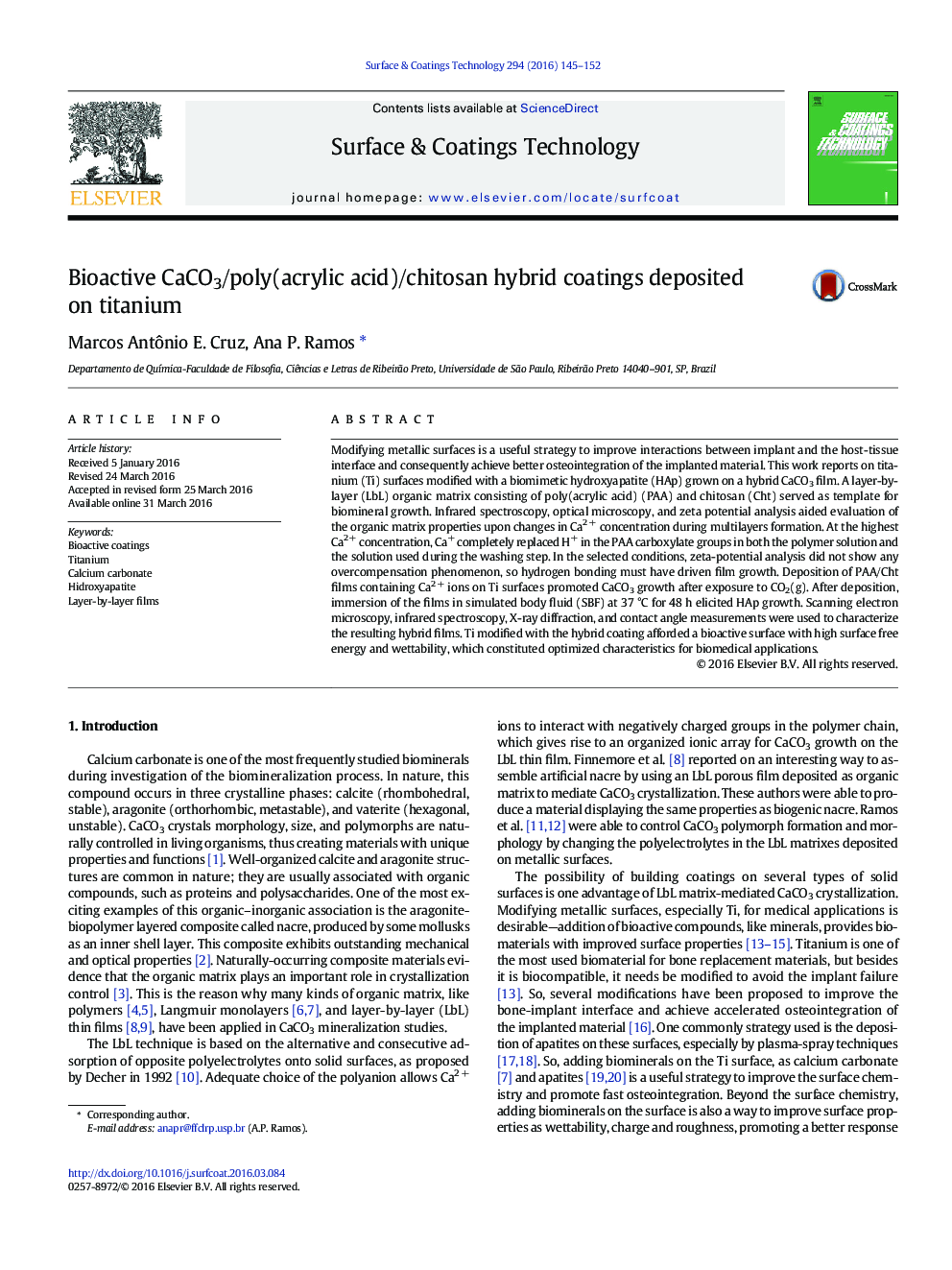| کد مقاله | کد نشریه | سال انتشار | مقاله انگلیسی | نسخه تمام متن |
|---|---|---|---|---|
| 1656423 | 1517585 | 2016 | 8 صفحه PDF | دانلود رایگان |

• Ti surfaces were modified by CaCO3 thin film growth on organic LbL matrixes.
• The ionic strength influenced the polyanion deposition and sequent mineral growth.
• The CaCO3 hybrid film allowed the hydroxyapatite growth after exposure to SBF for 48 h.
• The bioactive coating on the Ti exhibited high wettability and surface free energy
Modifying metallic surfaces is a useful strategy to improve interactions between implant and the host-tissue interface and consequently achieve better osteointegration of the implanted material. This work reports on titanium (Ti) surfaces modified with a biomimetic hydroxyapatite (HAp) grown on a hybrid CaCO3 film. A layer-by-layer (LbL) organic matrix consisting of poly(acrylic acid) (PAA) and chitosan (Cht) served as template for biomineral growth. Infrared spectroscopy, optical microscopy, and zeta potential analysis aided evaluation of the organic matrix properties upon changes in Ca2 + concentration during multilayers formation. At the highest Ca2 + concentration, Ca+ completely replaced H+ in the PAA carboxylate groups in both the polymer solution and the solution used during the washing step. In the selected conditions, zeta-potential analysis did not show any overcompensation phenomenon, so hydrogen bonding must have driven film growth. Deposition of PAA/Cht films containing Ca2 + ions on Ti surfaces promoted CaCO3 growth after exposure to CO2(g). After deposition, immersion of the films in simulated body fluid (SBF) at 37 °C for 48 h elicited HAp growth. Scanning electron microscopy, infrared spectroscopy, X-ray diffraction, and contact angle measurements were used to characterize the resulting hybrid films. Ti modified with the hybrid coating afforded a bioactive surface with high surface free energy and wettability, which constituted optimized characteristics for biomedical applications.
Figure optionsDownload high-quality image (217 K)Download as PowerPoint slide
Journal: Surface and Coatings Technology - Volume 294, 25 May 2016, Pages 145–152